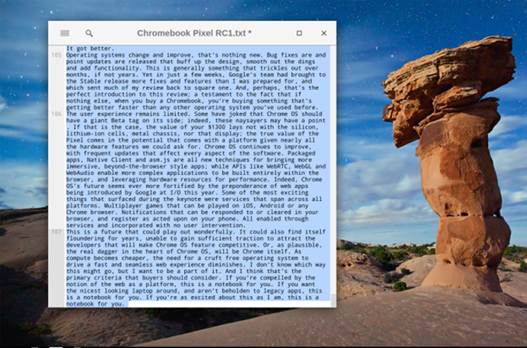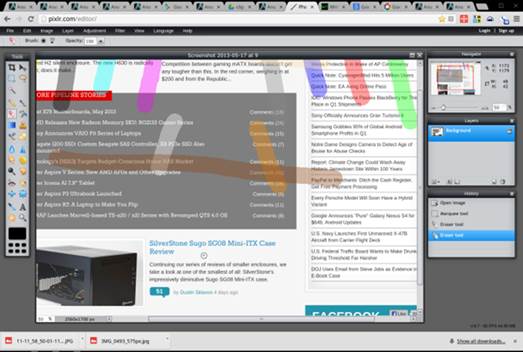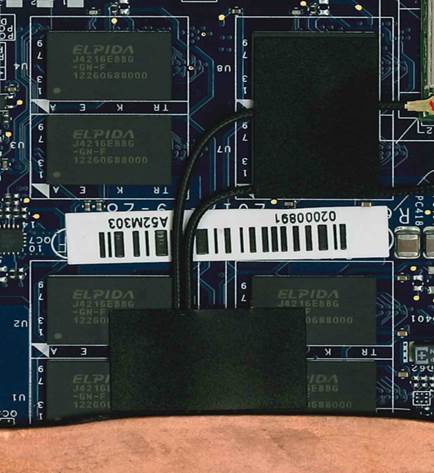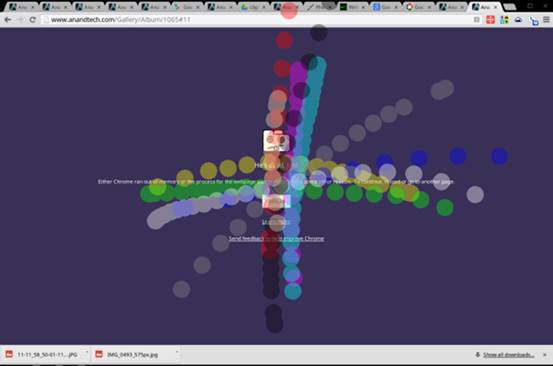Utility continued
For many of us, the browser is about
communication and consumption. We watch movies and listen to music in the
browser. We chat with friends, send email, participate in social networking and
even appear in the chat videos and voice calls over the browser. Of course, we
read and see pictures. However, if we need to work, we will do more than communication
and consumption, they need to produce. That means the appropriate application
is opened. Right?
Writing is always one of the strong points
of the Chrome OS, and in the previous reviews we said the limitations of the
operating system really help to make it an excellent tool for writers. It's
hard to not write when all you have one text field. Pretty much of the writing
applications are just one click away, as excellent Google Docs, Microsoft
Office 365 and Writer. The appearance of packaged applications is opening up
opportunities for a variety of applications to step outside the browser window.
Txt is the original favorite, simple but adaptable, and it does not get stuck
in one tab.

<TXT>,
a packaged app
Most of the printing, web ... etc. all need
more than just text. A few years ago, there was the excitement exploding around
the web image editing applications, and everyone involved, including Adobe and
Flickr. Since then, the hype has gone, and innovation too. There are two
factors that limit the attractiveness of these applications. First, there are
limitations related to the size and type of file. This is mainly due to the
fear of bandwidth, for users and services server. If we have carte to upload
all our large RAW files into one online editor and then edit them and save
multiple copies, as we have done in the local applications, we will end up with
gigabytes of transmission data. So even on the paid app, you constrain to the
average size JPG image, enough for web publishing, but base on high DPI content
actually appears, this method is quite limited.
The second limitation is in the
applications themselves, they are simply but not enough. Some applications take
the wizard method that you may be familiar from the application of Shutterfly.
Upload photos and make a modest adjustment in one simple interface are easy to
navigate. Excellent for a reasonable job but not great if you're serious about
the editing. Want to control the rotation of the image? In Light room, you hold
the rotation bar in Crop tab and adjust it as you like, in some image editing
applications on the web, your choice is rotated 90 degrees each time. There are
much more complete applications, but they have a price almost unbelievable:
Flash. Pixlr is an excellent example about the web application with desktop UI,
is controlled by Flash, although the software itself is limited with JPG. So
this time, we hope in the future of the image editing web applications, but not
until then.

Photo
editing app Pixlr, driven by Flash
So you can write, but images do not. Video?
Not yet. Development? That's just one text editor, right? We thought about many
lines of work and almost all end with the users putting the Chrome Remote
Desktop to use. Even web developers will find themselves that are hampered by
the inability to check compatibility IE or Firefox, and by the limited number
of browser-based IDEs released. Finally, what we feel comfortable with writing
and consumption. These experiences are really great, but utilities are still
blockages. It may be time for Google to jump on and begin to develop its own
increased productivity tools. Provide the powerful imaging tool and it becomes
strong web printing equipment. Provide the ability to emulate browsing
environments and we can see developers to flock Chromebook.
The Memory issue
Memory has long been a problem for
Chromebook, but I do not understand why until recently. Of course incredibly
high pixel number will not help things. To learn how they can cope with the
problem we met Caesar Sengupta, product manager at Google for Chrome OS. I have
never understood why the Chromebook always go with the modest built-in memory.
Of course, it's not a matter of price, very cheap memory. It was sealed, and
came in the denser package so not sure the space problem. Google is launching a
conscious choice when using memory. So, what you do with 4 million pixels and
4GB of RAM? In this case, the first step is to show every page at 1,280x800,
unless the available HiDPI asset. The final product is upscale to full 2,560x1,600,
but the memory is not being punished as you might expect, of course, unless all
the websites you visit they have the HiDPI assets.

The
available HiDPI asset
Then there's the user behavior problem that
has long bothered Chrome OS. The tabs linger and multiply. An untidy user can
lid the memory assets of any system with this tab to another tab of the unread
long text and GIFs of cats. With the memory is demanded heavily, the operating
system will start to change the used data bits into a swap file on the local
storage, an expansion of the system memory is saved on your hard drive. Even
the fastest SSDs are several orders of magnitude slower than RAM, so the
transition to the tab that the content has been pushed to the swap file will
bring one blank screen when the content is put back into the system memory. The
Chrome OS developers have a mission: an operating system that lives and
breathes entirely in the system memory. That means there is no swap file. And
that means that the user experience is often disappointing.
That same untidy user can subdue Chromebook
with the open tabs, and no swap file, the pages that are purged from the memory
are only refreshed when the focus is restored. Not a big deal, right? Assuming
these tabs are actually the websites content management system and dozens of
research tabs. Furthermore, you have just spent a recombined hour in a great
post, and also take many times to check all studies. Go back to your CMS,
refresh the page and all of your wonderful post disappeared into nothingness.
Sure, there is a better alternative. Please?

The
Chrome OS BSOD (plus touch indicators)
Android enthusiasts will be familiar with
computer, the method creates the archive page on the memory system can help
alleviate the shortage of memory. Currently called zram, this technique
perfectly fits the speed philosophy of Chrome than any other factor. The local
storage options are vary too much about speed for their speed targets with
Chrome, so the management of file page in the memory is the logical step. In
fact, zram is better but not great. When one site is completely purged, you may
have something similar BSOD Chrome and reload options. This system reduces to
delay which occur from each page refresh automatically when you tab through
them. I do not notice any particular delay that may represent the data of the
specific page being called back from zram, which can be a good sign. But do not
change the fact that the piece sliced from 4GB to use it as the file page is
almost ineffective as adding another 4GB.